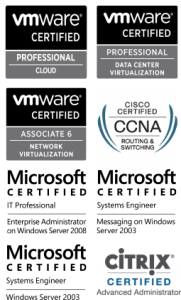Scenario
You need to install SQL Server 2008 R2. That is all. 😐
Follow the steps below to spawn a fresh SQL-child of your own.
Tips, thoughts and notes from the world of IT
You need to install SQL Server 2008 R2. That is all. 😐
Follow the steps below to spawn a fresh SQL-child of your own.
Several users have complained that they have found several emails in their Junk Email folders within Outlook.
They already have a hosted email filtering solution that sends a daily quarantine digest to each user. When they release the quarantined emails, they sometimes go into Outlook’s Junk Email folder, so it seems the email has not been released. Users are unhappy.
You need to find a way of globally disabling Outlook’s Junk Email filtering. Enter custom Administrative Templates.
A great post on troubleshooting Group Policy using event logs: http://technet.microsoft.com/en-us/library/cc749336(v=ws.10).aspx
I can’t remember where I copied the rest of these steps, but I refer to them quite often:
1. On domain controller, click Start -> Run, type GPMC.MSC, it will load the GPMC console. If the GPMC snap-in is not installed.
2. Right click on “Group Policy Result” and choose wizard to generate a report for the problematic computer and user account (please place appropriately). (Choose computer and select the proper user in the wizard)
3. Right click the resulting group policy result and click the “Save Report…” => save report and upload it to the link I provided.
1. Run the command gpresult /v >C:\gpresult.txt.
2. Upload the C:\gpresult.txt to the above link.
Subkey: HKEY_LOCAL_MACHINE\Software\Microsoft\Windows NT\CurrentVersion\Winlogon
Entry: UserEnvDebugLevel
Type: REG_DWORD
Value data: 0x00030002 (Hexadecimal)
After the issue reoccurs, find and upload %windir%\Debug\UserMode\Userenv.log file.
Subkey: Key: HKEY_LOCAL_MACHINE\Software\Microsoft\Windows NT\CurrentVersion\Diagnostics
Entry: FdeployDebugLevel
Type: REG_DWORD
Value data: 0x0000000F (Hexadecimal)
The log file can be found at: %Systemroot%\debug\usermode\fdeploy.log.
Everyone loves a Venn diagram, so I was even happier when I realised I’ve almost got my career in the “hooray zone”: http://lifehacker.com/5280491/the-road-to-happiness-in-your-work-lies-in-the-hooray-zone
I read a few good tips the other day on this post: http://www.lovemytool.com/blog/2010/05/wifi-diagnostics-from-windows-7-or-vista-command-prompt-by-tony-fortunato.html
To view the normal network details, you can type this at the command prompt:
netsh wlan show networks
To view more – including network channel and supported speeds – type this:
netsh wlan show networks mode=bssid
EDIT: netsh wlan show all is probably the easiest to remember and shows more detail.
I usually refer to this excellent TechNet post when using PerfMon: http://technet.microsoft.com/en-us/magazine/2008.08.pulse.aspx
However, for measuring IOPS, these counters are better:
These counters were recommended from this video on VDI and IOPS: http://www.brianmadden.com/blogs/videos/archive/2012/03/19/windows-iops-deep-dive-what-iops-means-to-you-and-why-you-can-t-do-vdi-without-knowing-about-them_2C00_-a-video-from-BriForum-2011.aspx
You’ve created and linked a new GPO that uses Group Policy Preferences to move some files. You’ve had this working before, but now find that the files aren’t being copied across on certain clients.
The Resultant Set of Policy (RSOP) tool does not show GP Preferences, so you need another way of troubleshooting this. Enter Group Policy Preference logging and tracing.
Follow the steps below to enable the GP Preferences log file(s):
You’ve just tried to migrate a VM to a different datastore, and got the following error:
Relocate virtual machine: The operation is not allowed in the current connection state of the host.
Time: 01/06/2012 08:38:26
Target: WSMDC02
vCenter Server: WSMVCSA
A similar error occurs when trying to turn on a VM:
Power On virtual machine:The operation is not allowed in the current connection state of the host.
Time: 01/06/2012 10:24:09
Target: WSMAPP02
vCenter Server: WSMVCSA
You’ve also noticed the CPU and Memory usage is 0 for the ESXi host:
Here is how to fix it:
Whilst troubleshooting slow printing issues, I stumbled across the following blog post: http://blogs.technet.com/b/askperf/archive/2012/03/16/print-update-rollup-available-for-windows-7-amp-windows-server-2008-r2.aspx
I was surprised to read this in the comments:
At this time there are no plans to make this available on WSUS
Really?! If it is “designed to reduce known issues such as printing performance, print spooler crashes, connectivity to print queues, and print driver installation” then why would Microsoft not distribute this through the normal channels?
You can get the updates at http://support.microsoft.com/default.aspx?scid=kb;en-US;2647753 but don’t go blindly rolling this out; test first!
You’ve noticed there is software that shouldn’t be installed on a client PC, but when you try to uninstall it via a remote desktop connection, a warning message appears saying “This installation can only be uninstalled by a user with administrative privileges”. Smeg!

Copyright © 2019 · Enterprise Child Theme on Genesis Framework · WordPress · Log in